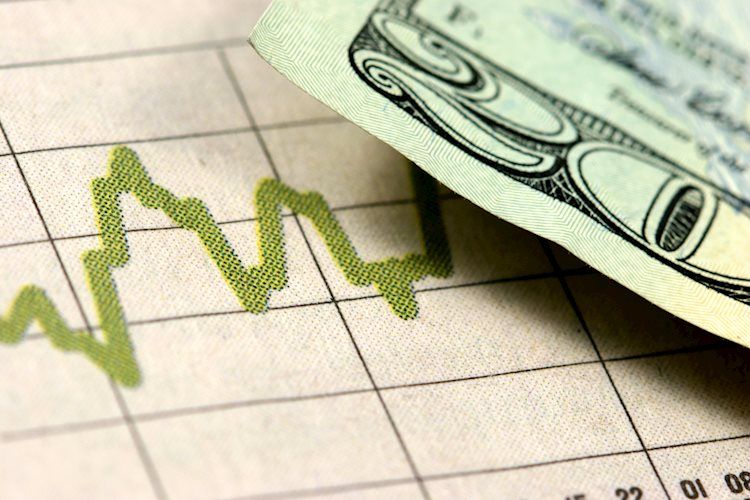- The US Dollar is set to book another week of gains.
- No focal data points on Friday, so expect tepid market movements.
- The US Dollar Index fails again to hold the 105.00 level, and could start to peak.
The US Dollar (USD) yet again the big winner this week as the divergence between Europe and the US labelled the Greenback as biggest winner in that equation. The path for the Greenback this Friday looks to be one of sideways to stronger against most major peers. The US economy is doing well and is on a trajectory for a soft landing, while economic activity in the Eurozone and Central Europe shows increasing signs of distress.
No real market moving data points on the calendar on Friday. Still, data about Wholesale Inventories for July will be released.The Baker Hughes US Rig Count data, to be published at the end of the trading day, could carry more weight than usual in the aftermath of the failed talks in Australia, which will likely lead to nearly 10% of the Natural Gas supply to be withdrawn in the coming weeks.
Daily digest: US Dollar already in weekend mode
- Traders will be on the lookout for any news from the G20 meeting in India taking place over the weekend. Aspecially the sudden move in Crude Prices by Saudi Arabia might be interesting to watch when meeting with US President Joe Biden.
- The main datapoint for this Friday is Wholesale Inventories data, which will come out at 14:00 GMT.. Expectations are for inventories to decrease by a marginal 0.1% in July, the same decline it registered in June.
- Baker Hughes US Oil Rig Count at 17:00 GMT will get a bit more attention as markets will look for clues over whether the US can supply itself with oil and natural gas now that 10% of global supply will be drawn from the markets as Australian LNG workers go on strikes.
- Equities in Asia are set to close this week in negative, with the last trading day also registering losses: The Japanese Topic Index closes down 1%. European equities are rather flat, though trading below zero as well.
- The CME Group FedWatch Tool shows that markets are pricing in a 93% chance that the Federal Reserve will keep interest rates unchanged at its meeting in September.
- The benchmark 10-year US Treasury bond yield trades at 4.23% and is off the peak from earlier this week. Markets have been able to digest a substantial amount of debt issuances, which was one of the elements that pushed yields higher.
US Dollar Index technical analysis: US rules
The Greenback is back in favor and is rolling through the markets, weighing one equity and bond markets with lower bond prices and stocks dropping below several important support levels. The Greenback is extending its summer rally and could stay steady at stronger levels throughout the fall and winter if other central banks start cutting their benchmark interest rates. With the US Dollar remaining steady, depreciating currencies will push the US Dollar Index substantially higher and might see more Dollar strength to come.
All eyes stay on 105.00 after the DXY briefly broke the level on Wednesday and Thursday. Only a few cents to go and the DXY will be at a new six-month high once it is able to close there. The next levels are at 105.88, March’s high, which would make a new yearly high. If the index reaches this last level, some resistance might kick in.
On the downside, the 104.30 figure is vital to keep the US Dollar Index sustained at these elevated levels. Some room lower, the 200-day Simple Moving Average (SMA) at 103.04 comes into play, which could bring substantially more weakness once the DXY starts trading below it. The double belt of support at 102.68, with both the 100-day and the 55-day SMA, are the last lines of defence before the US Dollar sees substantial and longer-term depreciation.
Fed FAQs
Monetary policy in the US is shaped by the Federal Reserve (Fed). The Fed has two mandates: to achieve price stability and foster full employment. Its primary tool to achieve these goals is by adjusting interest rates.
When prices are rising too quickly and inflation is above the Fed’s 2% target, it raises interest rates, increasing borrowing costs throughout the economy. This results in a stronger US Dollar (USD) as it makes the US a more attractive place for international investors to park their money.
When inflation falls below 2% or the Unemployment Rate is too high, the Fed may lower interest rates to encourage borrowing, which weighs on the Greenback.
The Federal Reserve (Fed) holds eight policy meetings a year, where the Federal Open Market Committee (FOMC) assesses economic conditions and makes monetary policy decisions.
The FOMC is attended by twelve Fed officials – the seven members of the Board of Governors, the president of the Federal Reserve Bank of New York, and four of the remaining eleven regional Reserve Bank presidents, who serve one-year terms on a rotating basis.
In extreme situations, the Federal Reserve may resort to a policy named Quantitative Easing (QE). QE is the process by which the Fed substantially increases the flow of credit in a stuck financial system.
It is a non-standard policy measure used during crises or when inflation is extremely low. It was the Fed’s weapon of choice during the Great Financial Crisis in 2008. It involves the Fed printing more Dollars and using them to buy high grade bonds from financial institutions. QE usually weakens the US Dollar.
Quantitative tightening (QT) is the reverse process of QE, whereby the Federal Reserve stops buying bonds from financial institutions and does not reinvest the principal from the bonds it holds maturing, to purchase new bonds. It is usually positive for the value of the US Dollar.

